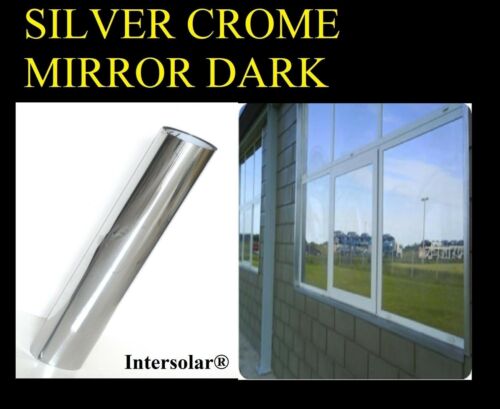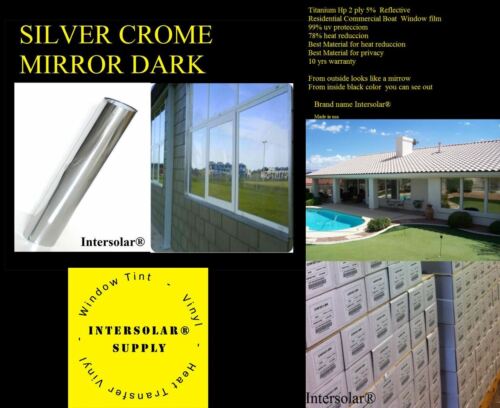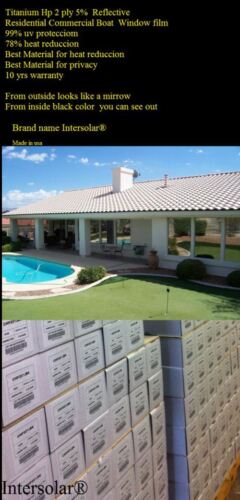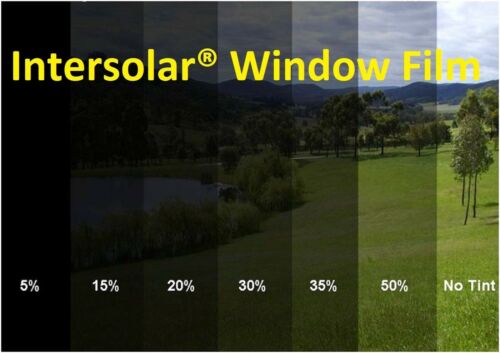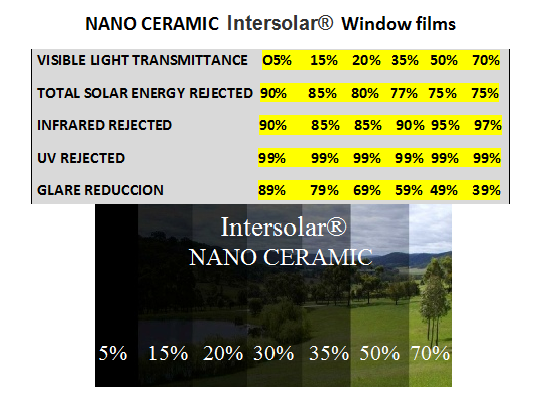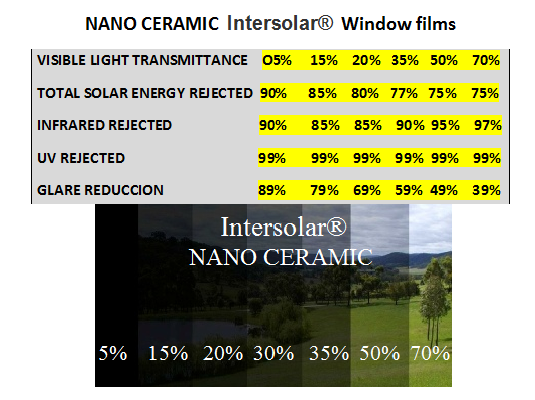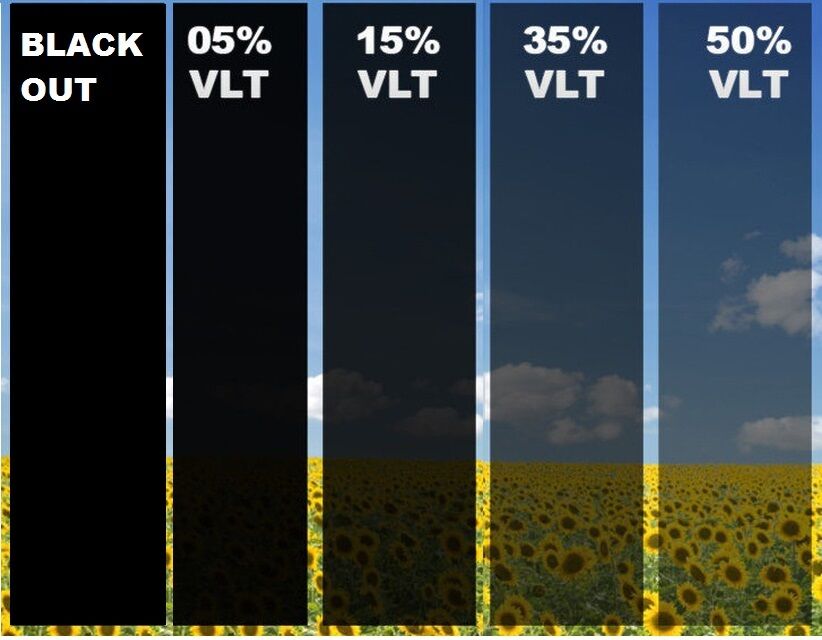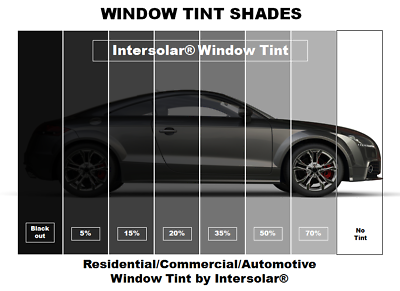-40%
38" x30' Silver/Black Film 05% Dark Made in usa 85% Heat Reduccion Dark
$ 39.6
- Description
- Size Guide
Description
Window Tint Silver BlackMirror Titanium High Performance 2Ply
Intersolar® 5% Dark
See our ebay store for all available sizes:
Width options:
72 inches , 60 inches , 48 inches , 40 inches , 36 inches , 30 inches , 24 inches , 20 inches
VLT (visual light transmittance) pass 9%
Infrared Light pass 6% ( stop 94% )
Most materials stop 40%
Infrared (IR) is invisible radiant energy, electromagnetic radiation with longer wavelengths than those of visible light, extending from the nominal red edge of the visible spectrum at 700 nanometers (frequency 430 THz) to 1 mm (300 GHz)[1] (although people can see infrared up to at least 1050 nm in experiments[2][3][4][5]). Most of the thermal radiation emitted by objects near room temperature is infrared.
Infrared radiation was discovered in 1800 by astronomer Sir William Herschel, who discovered a type of invisible radiation in the spectrum lower in energy than red light, by means of its effect on a thermometer.[6] Slightly more than half of the total energy from the Sun was eventually found to arrive on Earth in the form of infrared. The balance between absorbed and emitted infrared radiation has a critical effect on Earth's climate.
Infrared energy is emitted or absorbed by molecules when they change their rotational-vibrational movements. Infrared energy excites vibrational modes in a molecule through a change in the dipole moment, making it a useful frequency range for study of these energy states for molecules of the proper symmetry. Infrared spectroscopy examines absorption and transmission of photons in the infrared energy range.[7]
Infrared radiation is used in industrial, scientific, and medical applications. Night-vision devices using active near-infrared illumination allow people or animals to be observed without the observer being detected. Infrared astronomy uses sensor-equipped telescopes to penetrate dusty regions of space such as molecular clouds, detect objects such as planets, and to view highly red-shifted objects from the early days of the universe.[8] Infrared thermal-imaging cameras are used to detect heat loss in insulated systems, to observe changing blood flow in the skin, and to detect overheating of electrical apparatuses.
Thermal-infrared imaging is used extensively for military and civilian purposes. Military applications include target acquisition, surveillance, night vision, homing, and tracking. Humans at normal body temperature radiate chiefly at wavelengths around 10 µm (micrometers). Non-military uses include thermal efficiency analysis, environmental monitoring, industrial facility inspections, remote temperature sensing, short-ranged wireless communication,spectroscopy, and weather forecasting.
